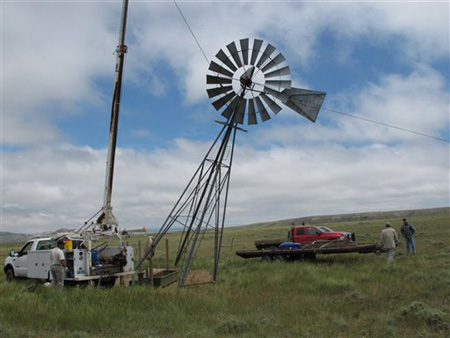“Paying for wind we don’t need, can’t use and can’t sell”
Taxpayers already pay a high price to subsidize wind energy through billions in federal grants, loan guarantees and tax credits that prop up the “windustry”. We now know the return on investment since 2009 is 10,000 lost wind industry jobs, according to the American Wind Energy Association.
But the losses only begin there. Now the bill for state renewable energy mandates is coming due with hundreds of thousands of Minnesota electric co-op and utility customers picking up the tab. Going green cost rural electric ratepayers in Minnesota, the fifth biggest wind power producer among the states, more than $70 million last year, according to the Minnesota Rural Electric Association (MREA). The MREA represents about fifty mostly small, rural electric co-ops and utilities which serve more than 625,000 Minnesota homes and businesses.
“It’s an enormous subsidy. You have to add wind power, whether you need it or not,” said Mark Glaess, MREA executive director. “Right now we’re paying for wind we don’t need, we can’t use and can’t sell.”
The Renewable Energy Standard (RES) passed by the 2007 Minnesota State Legislature directs electric utilities to ramp up their percentage of renewable energy sales to 25 percent by 2025. Put another way, one of every four kilowatt hours must come from renewable energy by 2025. Unlike many other states, Minnesota does not exempt co-ops and municipal utilities from complying with renewable energy standards. To meet the state’s escalating demands, rural electric co-ops and utilities are locked in long-term “take or pay” contracts to purchase power from wind farms. The economic downturn, however, has led to a marked decline in energy demand and a corresponding drop in energy prices. The sudden abundance of natural gas on the market put further downward pressure on energy prices.
The RES exists in a sort of price vacuum. No matter that coal-generated power costs considerably less than wind. Dozens of Minnesota co-ops are stuck with higher, pre-recession prices for surplus wind power which must be bought and distributed. The difference between what the wind power costs and what it resells for now adds up to tens of millions of dollars a year statewide, with rural residents caught in the middle.
“It’s a well-intentioned law that did not contemplate the inexplicable law of unintended consequences because it never considered resource planning to meet energy load and demand. What happens when the load goes down? Our members still have to buy it,” Glaess said. “And we’re going to have to increase rates to pay for our incumbent coal generation, which is getting smacked by the EPA (Environmental Protection Agency).”
The Minnesota Public Utilities Commission (PUC) directed electric co-ops and utilities to report the cost to ratepayers of complying with the RES. The top three wind loss leaders in 2011 were Great River Energy ($35 million), Minnkota ($27.5 million) and Dairyland Power ($18.1 million in Minnesota and Wisconsin combined). That’s a steep increase from 2010, when Great River Energy (GRE) reported a $22 million loss on wind energy sales, while Minnkota reported a $28.2 million loss the previous year.
“Until market prices increase, Great River Energy will likely see continued negative effects from RES compliance costs. Great River and its 28 member cooperatives urge officials to weigh the impact of further costs when considering additional regulations related to renewable energy so that our rates remain affordable,” according to the Great River Energy website. GRE expects losses to increase again in 2012 to $35 million.
The Minnesota Division of Energy Resources downplayed the financial impact on ratepayers and appeared to question the process in its RES filing. “The reports filed by utilities provide some information about the effects of renewable resources on rates. However, the rate impact of the RES is best determined through the resource planning process rather than through a simple comparison with market prices. To date, the Department’s IRP analyses have indicated that RES compliance is generally cost effective for the utilities subject to Minnesota’s RES Statute.”
The 2007 Next Generation Energy Act allows the state to delay implementation of the RES under certain conditions, but there appears to be no appetite for that–yet. Still, even large utilities that are better positioned to meet the RES mandate and absorb the costs have warned about the uncertainties facing wind power production and prices. The key concerns include competition from natural gas, rising wind generation costs and the expiration of the federal wind production subsidy at the end of 2012.
“Even a small shift in our current expectations for gas prices, carbon regulation and wind cost could result in significant future cost impacts to fulfill the RES. In addition, individual wind projects may result in rate impacts that in aggregate could be significant,” Xcel Energy said in its 2010 report on the renewable energy mandate costs.
In rural Minnesota, co-ops and utilities say it’s already hard enough for some customers to pay their utility bills in this skittish economy without the mandate. With MREA co-ops and utilities just halfway toward implementing the 25 percent renewable mandate, a few dollars a month on electric bills now could add up to much more.
“What’s awful is the percentage of customers who are late in paying their electric bills,” said Mark Glaess. “The average percentage that poor people are spending on energy has increased by a great deal and then they’re throwing more of this on us? It’s regressive energy economics.”

COMMENTS
Please let us know if you're having issues with commenting.